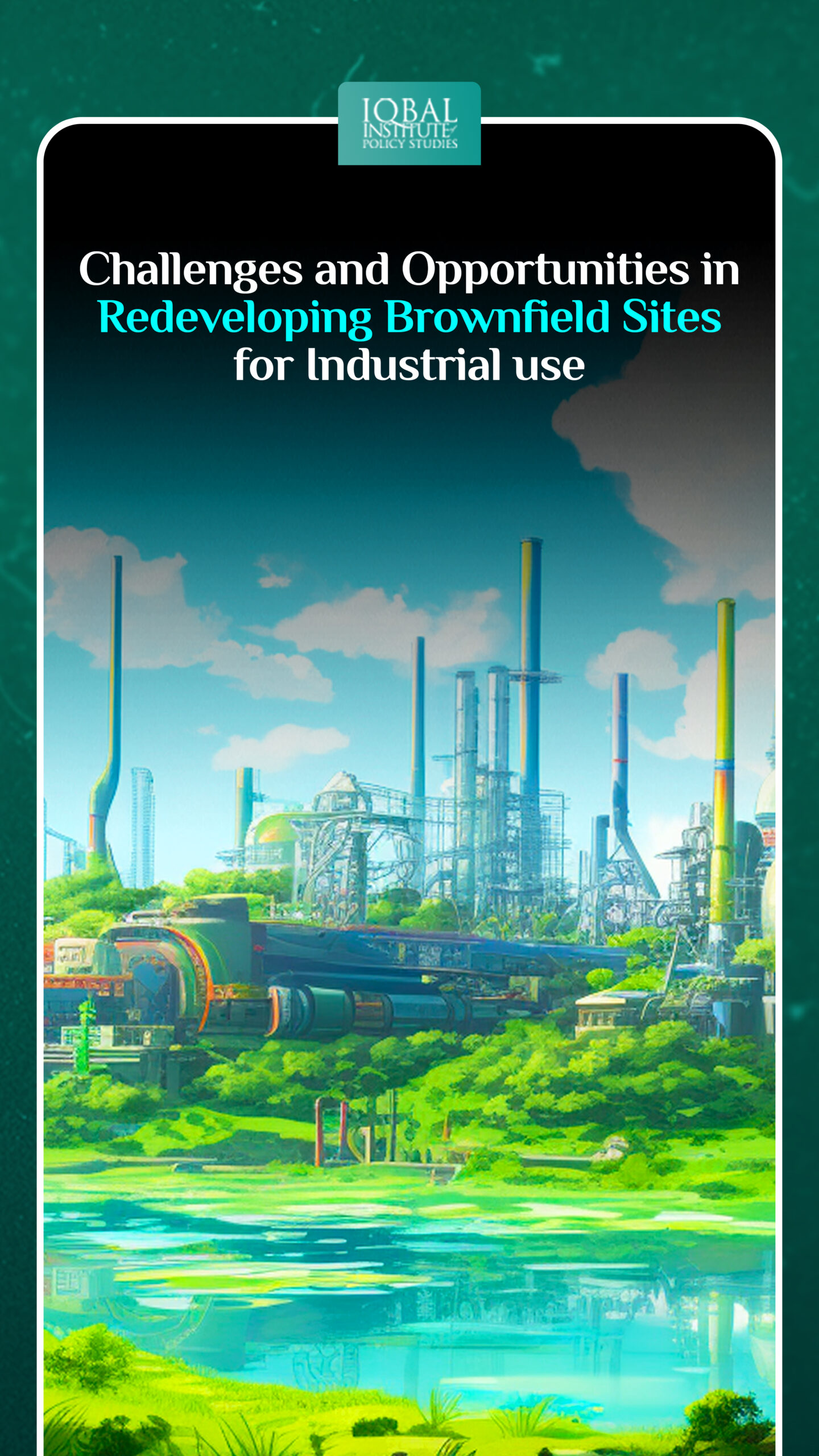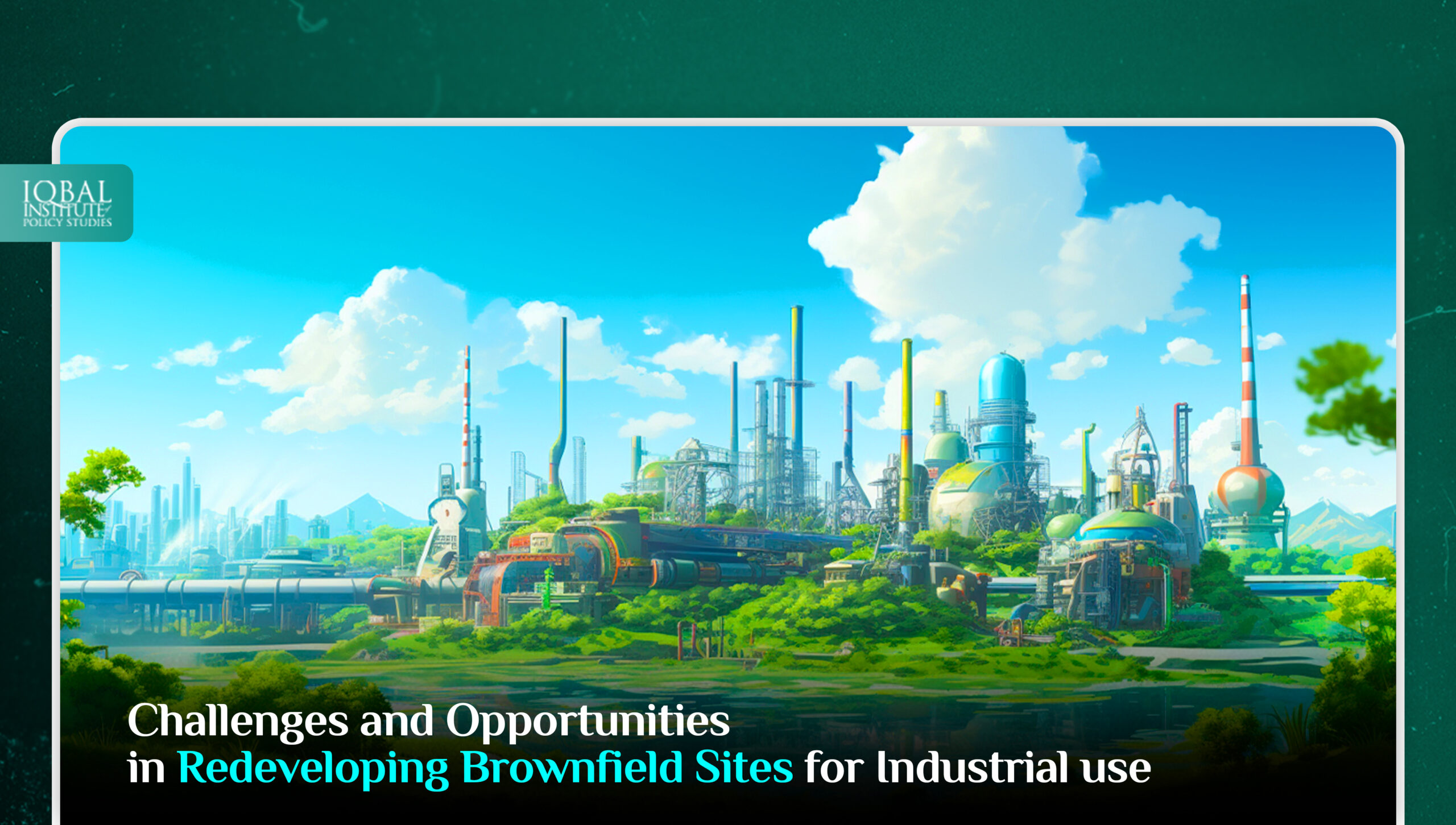Industrial development is a critical driver of economic growth, providing jobs, infrastructure, and essential goods and services. According to a recent study conducted by scientists from China and Pakistan, the restoration and redevelopment of environmentally degraded, idled, and abandoned urban lands, commonly known as brownfields, have the potential to significantly contribute to urban sustainability in Pakistan. Typical examples of brownfield sites include abandoned railroads, chemical storage facilities, and locations that were previously used for steel and heavy manufacturing. However, the progress in this area is hindered by numerous obstacles.
As urban areas become increasingly developed, finding suitable land for industrial projects poses a significant challenge.
The UN Environment Programme has identified brownfield redevelopment among top 21 critical issues that must be tackled to address the global sustainability challenges in the 21st century. To address this issue, the concept of brownfield redevelopment has gained traction, offering a sustainable and innovative solution. Brownfield sites are abandoned or underutilized properties with a history of industrial or commercial use, often hampered by environmental contamination. Repurposing these sites for industrial use presents a unique set of challenges and opportunities that shape the landscape of urban development and environmental conservation. In this article, we explore the complexities and potential advantages of redeveloping brownfield sites for industrial endeavors.
Challenges in Brownfield Redevelopment
Environmental Remediation
One of the most significant hurdles in redeveloping brownfield sites is environmental remediation. Environmental pollution and soil degradation are major problems in Pakistan, and the perception of brownfield is negative. Past industrial activities may have left behind hazardous substances and pollutants in the soil and groundwater, posing potential health risks and environmental harm. Cleaning up the contamination to meet environmental standards requires extensive efforts, technical expertise, and substantial investment.
Regulatory Hurdles
Redeveloping brownfield sites involves navigating through complex regulatory frameworks. Compliance with environmental regulations, zoning ordinances, and land-use restrictions can be time-consuming and costly. Developers must work closely with local authorities, environmental agencies, and stakeholders to ensure adherence to the necessary rules and regulations.
Infrastructure Upgrades
Many brownfield sites lack the necessary infrastructure to support new industrial development. Upgrading utilities, transportation networks, and public amenities may be essential to attract businesses and ensure the success of the redevelopment project. These upgrades can be capital-intensive and require coordination between developers, local government, and utility providers.
Financing and Funding
Brownfield redevelopment projects can be financially challenging due to the high costs associated with environmental remediation and infrastructure upgrades. Securing funding and financing for such projects may require innovative approaches, public-private partnerships, or leveraging grants and incentives provided by governments.
Community Perception
Redeveloping brownfield sites can raise concerns among local communities about potential health risks, noise pollution, and disruptions during the construction phase. Overcoming these concerns and gaining community support requires transparent communication, community engagement, and demonstrating the long-term benefits of the redevelopment.
Opportunities in Brownfield Redevelopment
Strategic Location
Many brownfield sites are strategically located in urban areas or near major transportation hubs. Their proximity to highways, railways, ports, and workforce centers can provide businesses with a competitive advantage in terms of access to markets and efficient supply chains.
Sustainable Development
Brownfield redevelopment aligns with principles of sustainable land use. By repurposing existing sites, developers can minimize urban sprawl, preserve greenfield areas, and protect natural habitats and ecosystems. Sustainable design and green building practices can further enhance the environmental performance of redeveloped industrial sites.
Urban Revitalization
Redeveloping brownfield sites can spark urban revitalization, breathing new life into previously neglected areas. The presence of industrial facilities can attract new businesses, stimulate job creation, and foster community development. This process can transform blighted neighborhoods into vibrant and economically active regions.
Community Engagement
Engaging with local communities during the brownfield redevelopment process is essential for success. Involving community stakeholders in planning and decision-making fosters a sense of ownership and ensures that the project aligns with the community’s needs and aspirations. Addressing concerns and incorporating community input can lead to stronger support and acceptance.
Tax Incentives and Grants
Governments often offer tax incentives, grants, and financing programs to encourage brownfield redevelopment. These incentives can significantly offset the costs of environmental cleanup and infrastructure improvements, making such projects more financially viable and attractive to investors.
Best Practices in Brownfield Redevelopment
Comprehensive Site Assessment
Conducting a thorough environmental site assessment is the first step in understanding the extent of contamination and formulating an effective remediation plan. A detailed assessment helps identify potential risks and determine the most appropriate remediation technologies.
Public-Private Partnerships
Collaborating with government entities and private investors can help leverage resources and expertise in brownfield redevelopment projects. Public-private partnerships can share the costs and risks, making the redevelopment more feasible.
Sustainable Design and Innovation
Incorporate sustainable design and innovative technologies into the redevelopment plan to promote eco-friendly operations and reduce the environmental footprint. Adopting energy-efficient systems, renewable energy sources, and green building practices can enhance the long-term sustainability of the project.
Phased Development
Brownfield redevelopment may involve complex and time-consuming processes. Implementing a phased development approach allows for flexibility and adaptation, ensuring that each stage is carefully managed and completed before moving to the next.
Community Collaboration
Engage with the local community throughout the entire redevelopment process. Organize public meetings, workshops, and feedback sessions to address concerns, answer questions, and build trust. Transparent communication fosters a positive relationship between developers and the community.
Conclusion
Redeveloping brownfield sites for industrial use presents both challenges and opportunities that require careful consideration and planning. While environmental remediation and regulatory compliance may pose significant hurdles, the strategic location, potential for sustainable development, and opportunities for urban revitalization make brownfield redevelopment a promising endeavor. By adopting best practices, engaging with stakeholders, and leveraging financial incentives, developers can transform these underutilized properties into vibrant industrial hubs that contribute to economic growth and environmental conservation. Embracing the potential of brownfield redevelopment opens new doors for sustainable urban development and responsible land use, signaling a commitment to preserving valuable land resources and revitalizing communities for a brighter, more sustainable future.
This article is written by Maha Nazami. Maha is a research analyst at the Iqbal Institute of Policy Studies (IIPS).



Leave a Reply